Exam 3 KRS-353
5.0(1)
5.0(1)
Card Sorting
1/184
Earn XP
Description and Tags
Study Analytics
Name | Mastery | Learn | Test | Matching | Spaced |
|---|
No study sessions yet.
185 Terms
1
New cards
iliofemoral
the strongest ligament in the human body
2
New cards
femur hyperextension
What movement does the iliofemoral restrict?
3
New cards
acetabular-femoral
joints of the pelvis
1. (ball and socket)
1. (ball and socket)
4
New cards
ball and socket
what kind of joint would the acetabular-femoral be?
5
New cards
sacroiliac
joints of the pelvis
2. (gliding/plane)
2. (gliding/plane)
6
New cards
gliding
what kind of joint is the sacroiliac?
7
New cards
pubic symphysis
joints of the pelvis
3. (amphiarthrodial)
3. (amphiarthrodial)
8
New cards
amphiarthrodial
what kind of joint is the pubic symphysis?
9
New cards
medial
… condyle is larger
10
New cards
weight bearing
medial condyle deals with more …
11
New cards
inguinal
femoral triangle
made out of what ligament…
1. \
made out of what ligament…
1. \
12
New cards
adductor longus
femoral triangle
made out of what ligament…
2. \
made out of what ligament…
2. \
13
New cards
sartorius
femoral triangle
made out of what ligament…
3. \
made out of what ligament…
3. \
14
New cards
inguinal ligament
what is this?
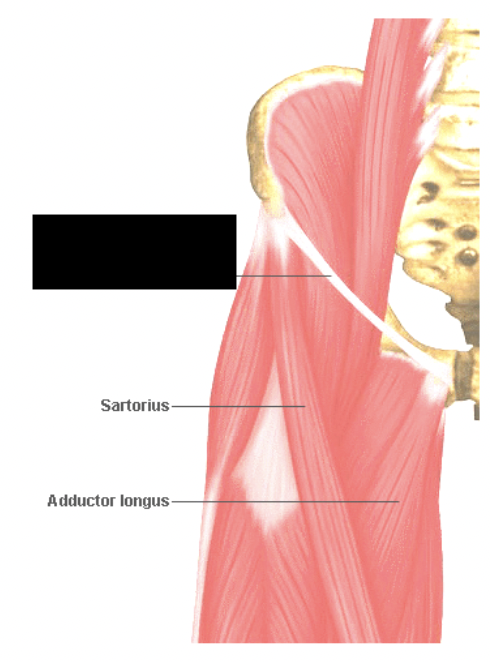
15
New cards
adductor longus ligament
what is this?
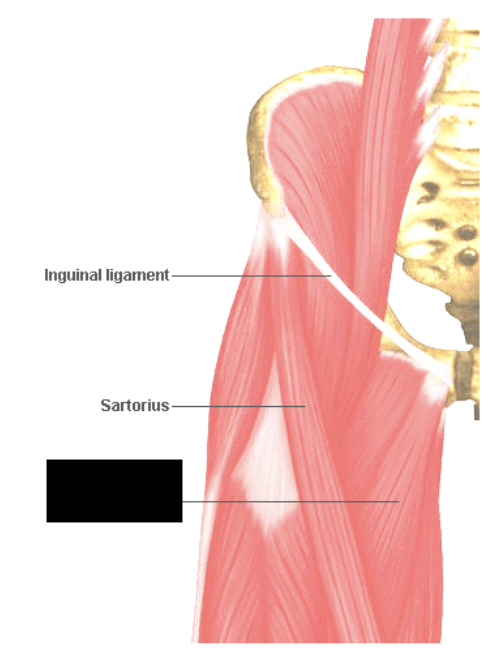
16
New cards
sartorius ligament
what is this?
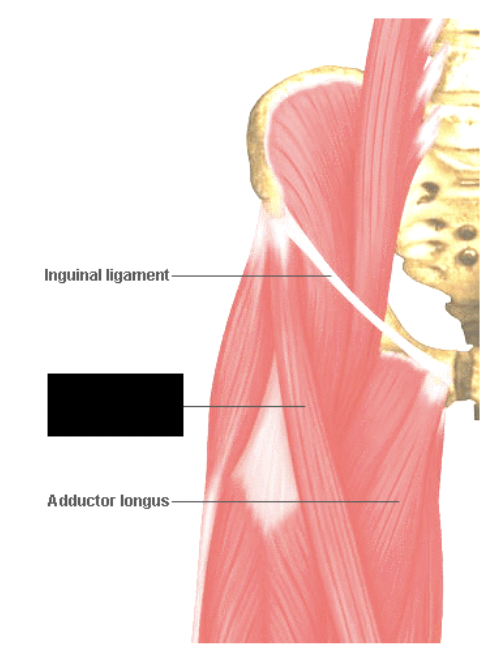
17
New cards
femoral artery
the femoral triangle contains…
1. \
1. \
18
New cards
femoral vein
the femoral triangle contains…
2. \
2. \
19
New cards
femoral nerve
the femoral triangle contains…
3. \
3. \
20
New cards
lymphatic tissues
the femoral triangle contains…
4. \
4. \
21
New cards
screw home
what mechanism
Knee at full extension, tibia externally rotates
* 10 degrees for proper alignment of the tibial and femoral condyle
Knee at full extension, tibia externally rotates
* 10 degrees for proper alignment of the tibial and femoral condyle
22
New cards
extension
screw home mechanism
knee at full …
knee at full …
23
New cards
tibia
screw home mechanism
… externally rotates
… externally rotates
24
New cards
externally rotates
screw home mechanism
tibia …
tibia …
25
New cards
10 degrees
screw home mechanism
… for proper alignment of the tibial and femoral condyle
… for proper alignment of the tibial and femoral condyle
26
New cards
reverse
what mechanism
* Unlocks by initial flexion from extension and tibia rotating internally
* Unlocks by initial flexion from extension and tibia rotating internally
27
New cards
flexion
reverse mechanism
Unlocks by initial … from extension and tibia rotating internally
Unlocks by initial … from extension and tibia rotating internally
28
New cards
internally
reverse mechanism
Unlocks by initial flexion from extension and tibia rotating ….
Unlocks by initial flexion from extension and tibia rotating ….
29
New cards
collateral
ligaments at knee joint
* Prevents frontal plane movements
* Prevents frontal plane movements
30
New cards
lateral collateral ligament
Extrinsic ligament
31
New cards
medial collateral ligament
Capsular ligament
32
New cards
medial collateral ligament
Commonly injured with any blow from the lateral side.
33
New cards
lateral
medial collateral ligament
* Commonly injured with any blow from the … side.
* Commonly injured with any blow from the … side.
34
New cards
lateral collateral ligament
what is this?
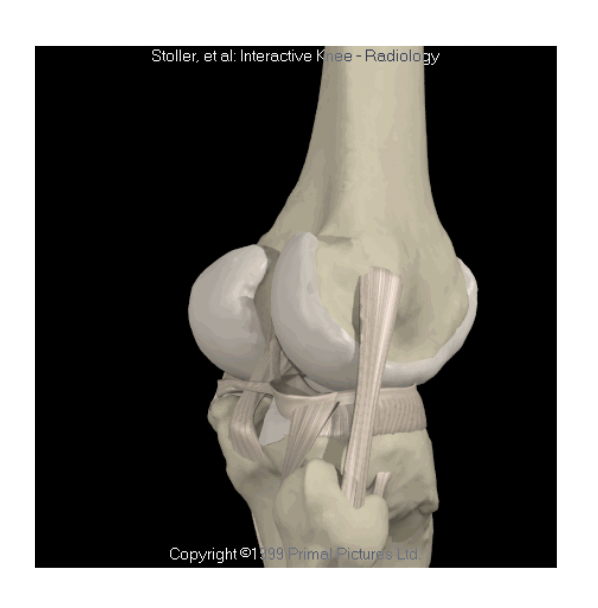
35
New cards
medial collateral ligament
what is this?
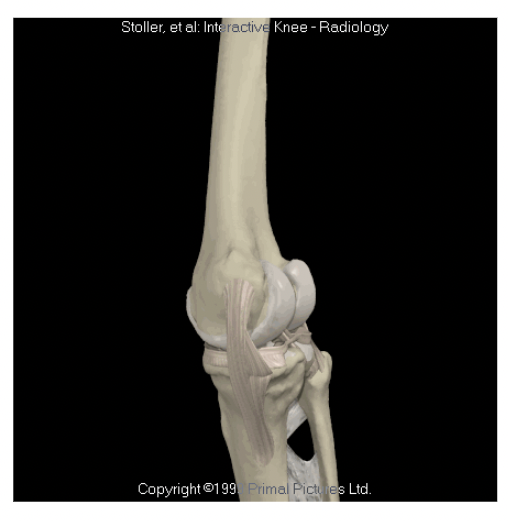
36
New cards
anterior
Anterior and posterior reinforcements
* Prevents anterior slippage
* Patella ligament
* Prevents anterior slippage
* Patella ligament
37
New cards
posterior
Anterior and posterior reinforcements
* Oblique popliteal ligament
* Oblique popliteal ligament
38
New cards
oblique popliteal ligament
what is this?
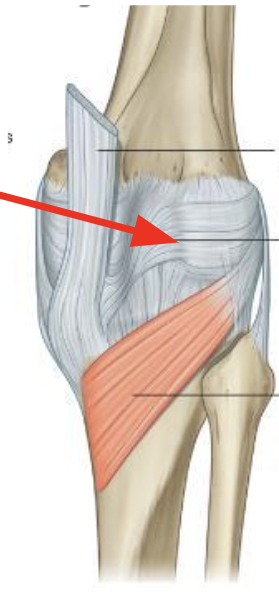
39
New cards
cruciates
Intrinsic ligaments
* Occupy the intercondylar fossa
* Occupy the intercondylar fossa
40
New cards
anterior cruciate ligament
what is this?
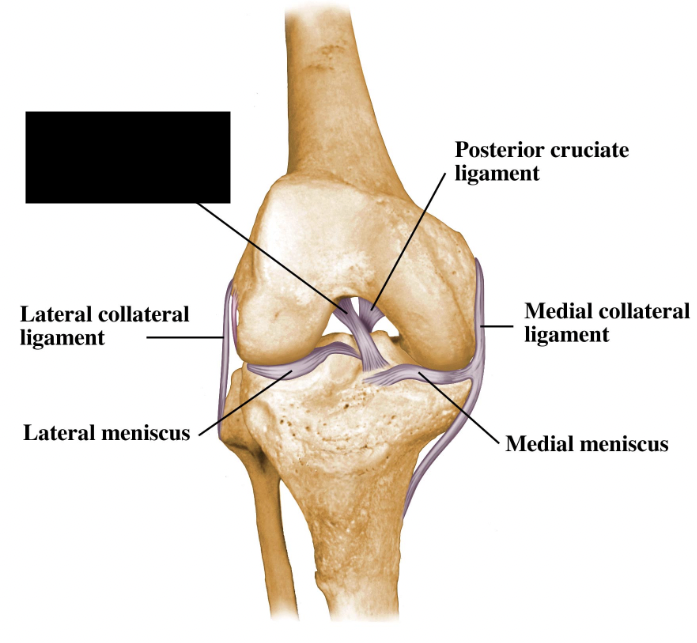
41
New cards
posterior cruciate ligament
what is this?
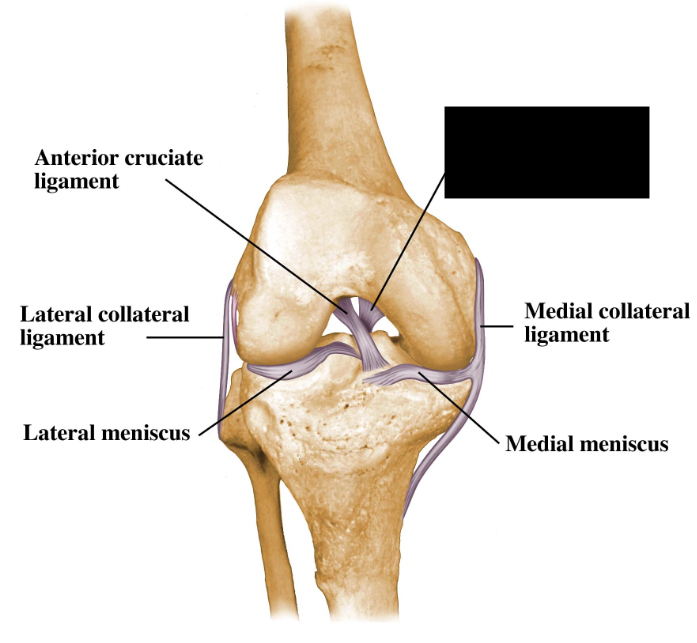
42
New cards
ACL
injuries to cruciates
* Most common
* non-contact rotary forces associated with planting & cutting, hyperextension
* Most common
* non-contact rotary forces associated with planting & cutting, hyperextension
43
New cards
non-contact
ACL injuries
* …. rotary forces associated with planting & cutting, Hyperextension
* …. rotary forces associated with planting & cutting, Hyperextension
44
New cards
planting
ACL injuries
non-contact rotary forces associated with … & cutting, Hyperextension
non-contact rotary forces associated with … & cutting, Hyperextension
45
New cards
cutting
ACL injuries
non-contact rotary forces associated with planting & …, Hyperextension
non-contact rotary forces associated with planting & …, Hyperextension
46
New cards
hyperextension
ACL injuries
non-contact rotary forces associated with planting & cutting, …
non-contact rotary forces associated with planting & cutting, …
47
New cards
ACL
Injuries to cruciates
violent quadriceps contraction
* Pull tibia forward on femur
violent quadriceps contraction
* Pull tibia forward on femur
48
New cards
forward
ACL injuries
* violent quadriceps contraction
* Pull tibia … on femur
* violent quadriceps contraction
* Pull tibia … on femur
49
New cards
PCL
injuries to cruciates
* direct contact with an opponent or playing surface
* direct contact with an opponent or playing surface
50
New cards
direct
PCL injuries
… contact with an opponent or playing surface
… contact with an opponent or playing surface
51
New cards
drawer test
test on cruicate injuries
* slide the tibia backward and forward
* slide the tibia backward and forward
52
New cards
rectus femoris
knee extension
agonists:
1. \
agonists:
1. \
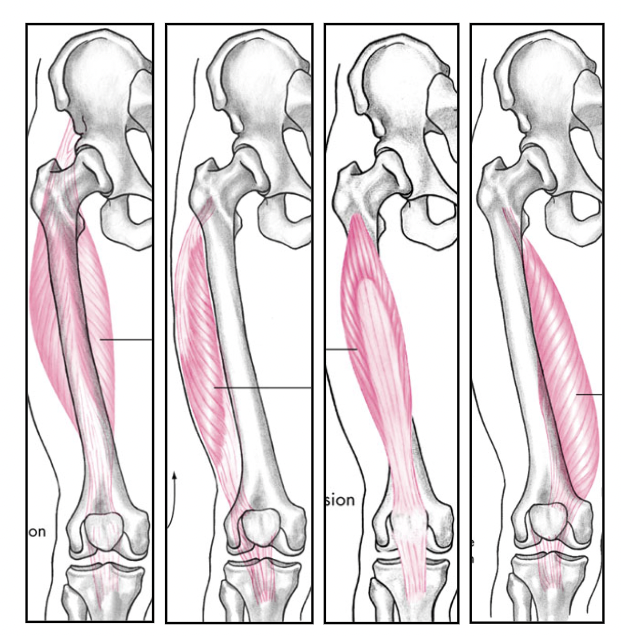
53
New cards
vastus lateralis
knee extension
agonists:
2. \
agonists:
2. \
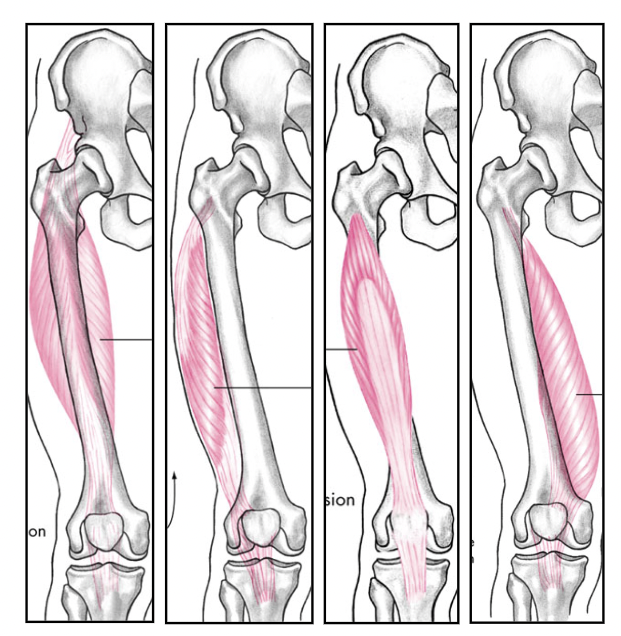
54
New cards
vastus intermedius
knee extension
agonists:
3. \
agonists:
3. \
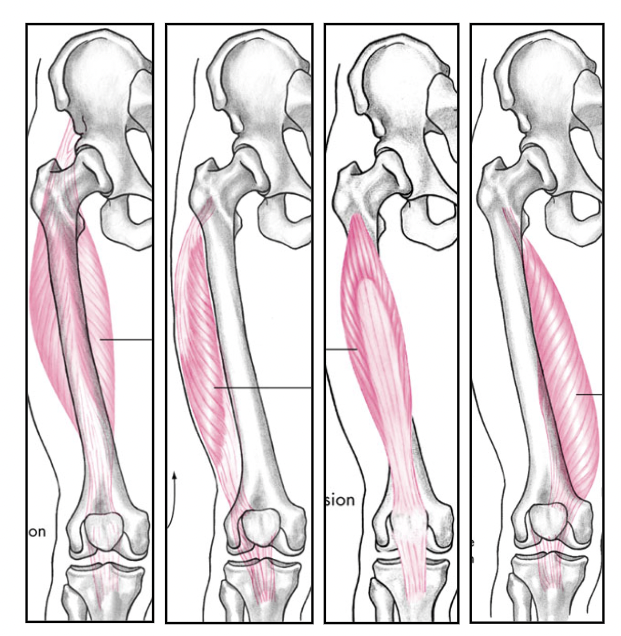
55
New cards
vastus medialis
knee extension
agonists:
4. \
agonists:
4. \

56
New cards
biceps femoris
knee flexion
agonists:
1. \
agonists:
1. \

57
New cards
semitendinosus
knee flexion
agonists:
2. \
agonists:
2. \
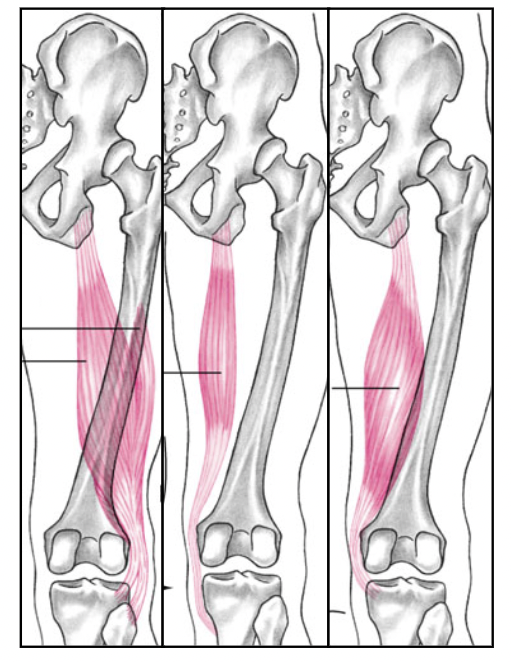
58
New cards
semimembranosus
knee flexion
agonists:
3. \
agonists:
3. \
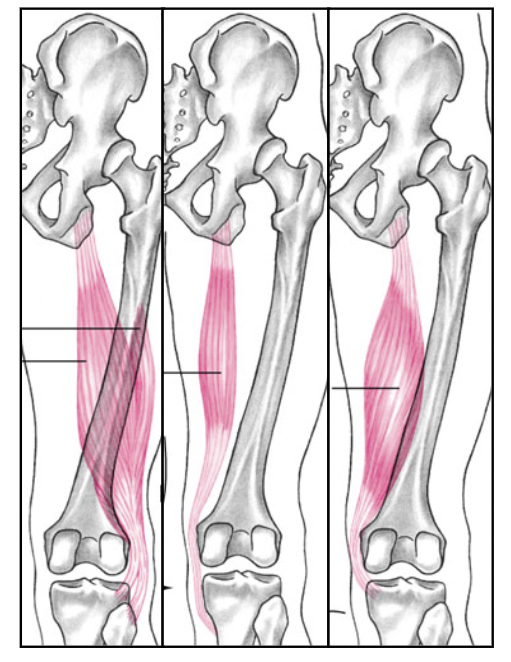
59
New cards
semitendinosus
knee internal rotation
agonists:
1. \
agonists:
1. \
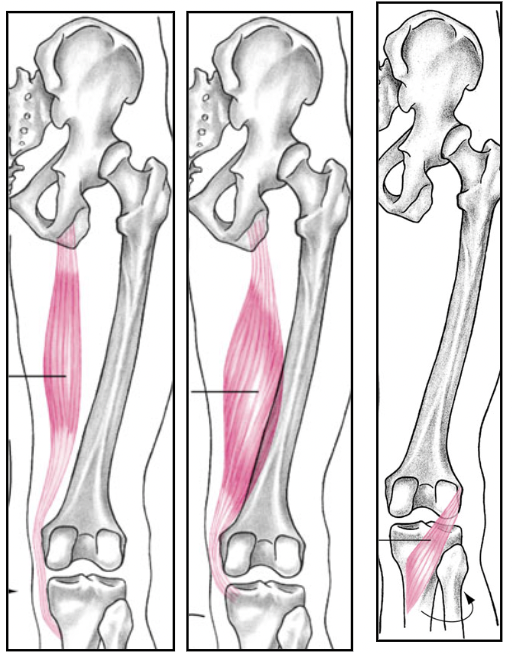
60
New cards
semimembranosus
knee internal rotation
agonists:
2. \
agonists:
2. \
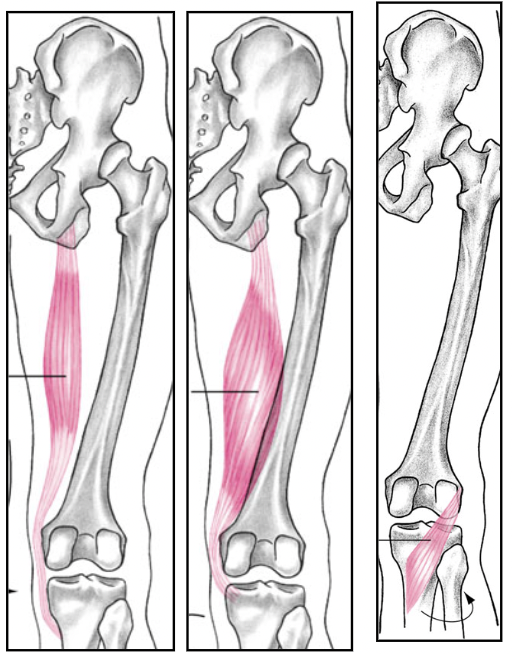
61
New cards
popliteus
knee internal rotation
agonists:
3. \
agonists:
3. \
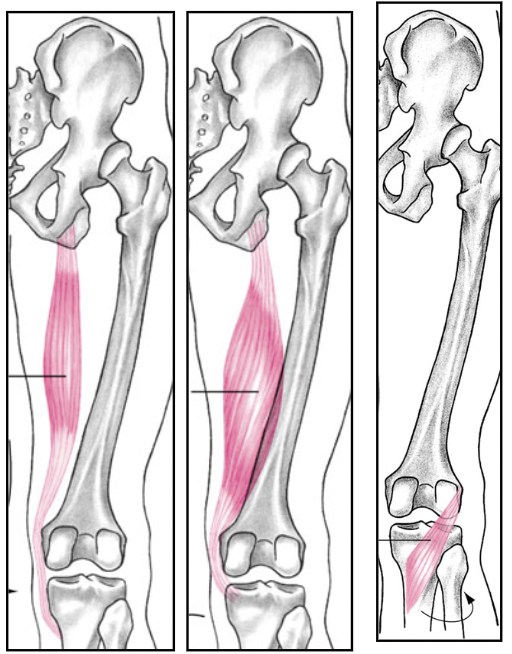
62
New cards
biceps femoris
knee external rotation
agonists:
agonists:
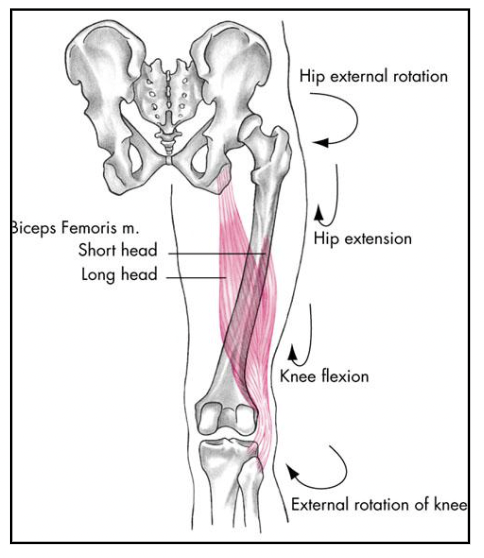
63
New cards
frontal
inversion and eversion occurs in what plane?
64
New cards
20-30
degrees of inversion
65
New cards
5-15
degrees of eversion
66
New cards
lateral collateral ligament
inversion limited by
67
New cards
medial collateral ligament
eversion limited by
68
New cards
anterior talofibular
ankle sprains
3 damaged ligaments:
1. \
3 damaged ligaments:
1. \
69
New cards
posterior talofibular
ankle sprains
3 damaged ligaments:
2. \
3 damaged ligaments:
2. \
70
New cards
calcaneofibular
ankle sprains
3 damaged ligaments:
3. \
3 damaged ligaments:
3. \
71
New cards
deltoid ligament
excessive eversion sprain damaged ligament:
72
New cards
tibialis anterior
anterior compartment of muscles
1. \
1. \
73
New cards
peroneus tertius
anterior compartment of muscles
2. \
2. \
74
New cards
tibialis anterior
what is this?

75
New cards
dorsiflexion
tibialis anterior
action:
1. (ankle)
action:
1. (ankle)
76
New cards
inversion
tibialis anterior
action:
2. (foot)
action:
2. (foot)
77
New cards
peroneus tertius
what is this?

78
New cards
dorsiflexion
peroneus tertius
action:
1. \
action:
1. \
79
New cards
eversion
peroneus tertius
action:
2. \
action:
2. \
80
New cards
extensor digitorum longus
peroneus tertius works with what? (action)
81
New cards
tibialis posterior
posterior muscles
1. \
1. \
82
New cards
peroneus longus
posterior muscles
2a.
2a.
83
New cards
peroneus brevis
posterior muscles
2b.
2b.
84
New cards
tibialis posterior
what is this?

85
New cards
inversion
tibialis posterior
action:
1. \
action:
1. \
86
New cards
plantar flexion
tibialis posterior
action:
2. \
action:
2. \
87
New cards
supination
tibialis posterior
action:
3. \
action:
3. \
88
New cards
peroneus longus
what is this?
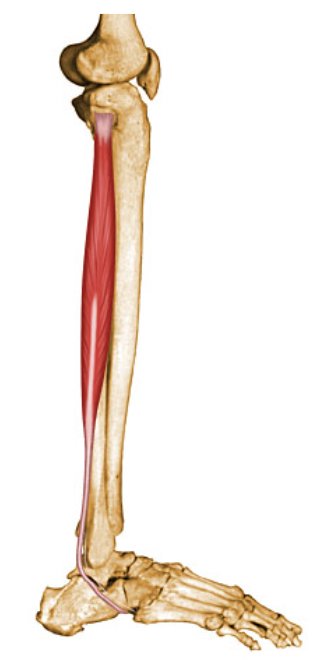
89
New cards
eversion
peroneus longus and brevis
action:
1. \
action:
1. \
90
New cards
plantar flexion
peroneus longus and brevis
action:
2. \
action:
2. \
91
New cards
transverse arch
peroneus longus
action:
action:
92
New cards
peroneus brevis
what is this?
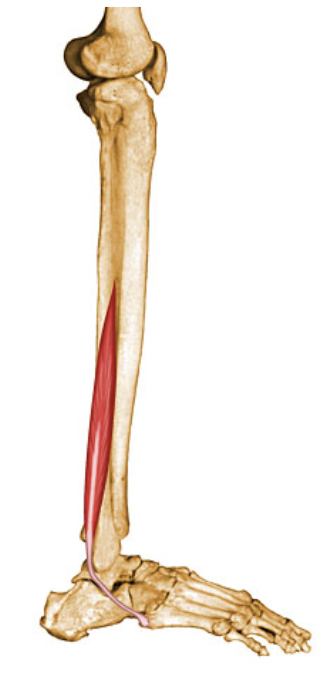
93
New cards
gastrocnemius
posterior calf muscles
1. \
1. \
94
New cards
soleus
posterior calf muscles
2. \
2. \
95
New cards
plantaris
posterior calf muscles
3. \
3. \
96
New cards
plantar flexion
gastrocnemius, soleus, plantaris
action:
action:
97
New cards
gastrocnemius
what is this?
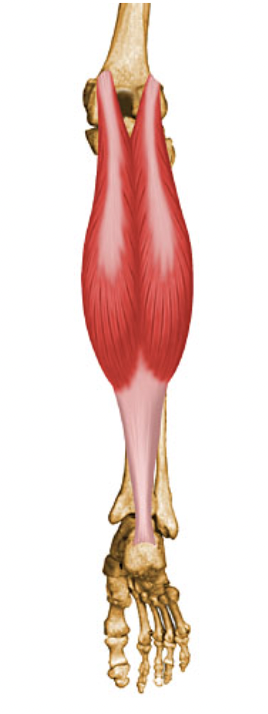
98
New cards
soleus
what is this?
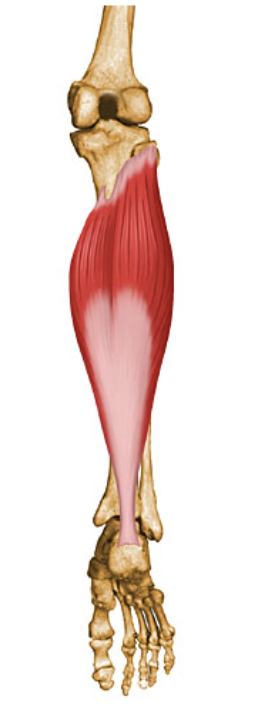
99
New cards
plantaris
what is this?
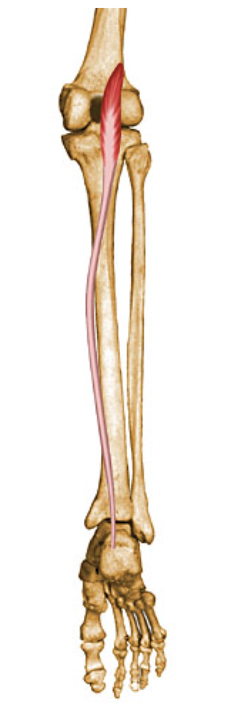
100
New cards
extensor digitorum longus
anterior deep muscles of calf
1. \
1. \